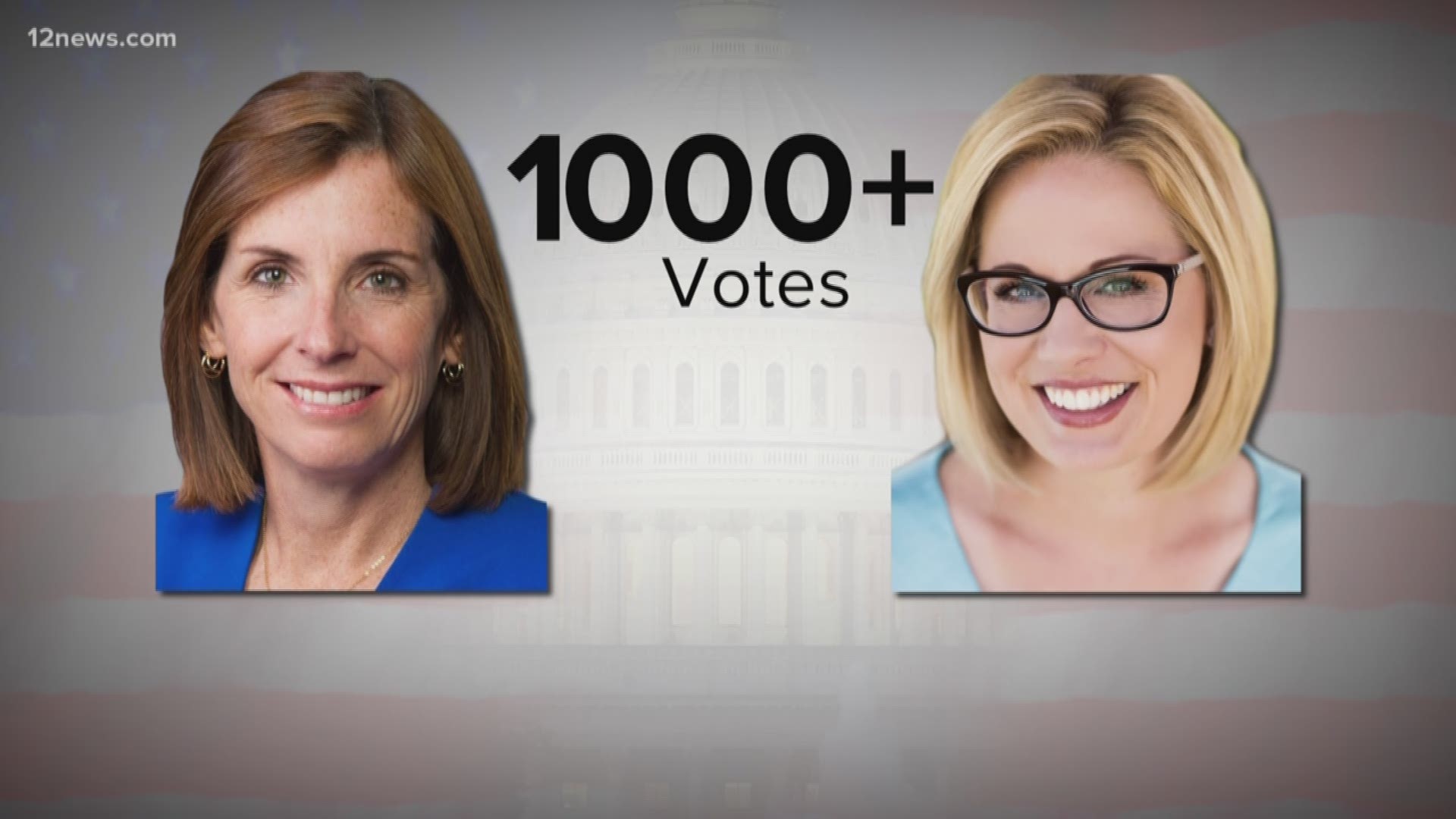Arizona is getting two new U.S. senators in January.
What do we know about how Democrat Kyrsten Sinema and Republican Martha McSally will cast votes affecting the entire state?
All we have to go on is their voting records for their congressional district and statements during their bitter Senate campaign.
Sinema defeated McSally in November, but Gov. Doug Ducey appointed McSally this week to fill the John McCain seat in the Senate.
Sinema and McSally's voting histories in the House tell us they're closer than virtually any other Democrats and Republicans. But on the most divisive issues before Congress, they are miles apart.
Let's start with the numbers:
Voting as one: In more than 1,000 votes in the current Congress, Sinema and McSally cast the same vote 50 percent of the time. According to voting records compiled by ProPublica, that level of agreement is almost unheard for two members of opposing parties.
In many cases, Democrat Sinema voted with the Republican majority to pass a bill.
Bucking their districts: Both candidates break with what their districts might want.
The "Trump Tracker" site shows McSally votes in line with President Donald Trump's position 97 percent of the time.
That's much higher than expected for a congresswoman whose Tucson swing district handed Trump a five-point defeat in 2016 against Hillary Clinton.
Sinema votes with the president 63 percent of the time, even though Trump lost in her Phoenix/East Valley district in 2016 by 16 points.
The Senate race exposed sharp differences between McSally and Sinema on major issues that matter most to many Arizonans.
Affordable Care Act: McSally voted in May 2017 to repeal and replace it. Sinema supported the ACA.
Sinema accused McSally of voting to end coverage for pre-existing conditions. McSally labeled that a lie.
Fact checks showed the GOP bill repealing Obamacare would have weakened that coverage by allowing insurers to charge more.
Tax bill: On the landmark Republican tax bill signed by the president in December 2017, McSally voted in support, Sinema was opposed.
They disagreed over the impact on Arizona.
Here's what Sinema said: "Passing unbalanced tax cuts for short-term political gain is not in the best interest of Arizona or the American people."
And this from McSally: "This legislation will help hardworking families in Arizona make — and keep — more of their hard earned money."
Kavanaugh nomination: On the divisive Brett Kavanaugh nomination to the U.S. Supreme Court, McSally said she would have voted to confirm him. Sinema would have rejected Kavanaugh.
"The decision I would have made, based on lying under oath, would have been to vote 'no,'" Sinema said at the lone debate during the Senate campaign, on Oct. 15.
McSally's response at the debate: "We have seen the mob rule in Washington, D.C. In the end, Arizonans wanted a 'yes' vote."
As new members of the U.S. Senate, Sinema, with a full six-year term, and McSally, facing a special election in 2020, could cast several votes on confirming Supreme Court justices.
And there's one more thing to consider...
Politics of voting: Senate party politics and their own political futures will play a role in McSally and Sinema's Senate votes.
Sinema has the advantage of having won a full six-year term, which might insulate her from short-term political concerns.
McSally, as an appointee to the John McCain Senate seat, is subject to those short-term pressures.
She faces a special election in 2020 and, if she wins, another election in 2022 for a full six-year term. That's three elections in four years.
McSally embraced President Donald Trump and was a political protégé of Senate Majority Leader Mitch McConnell, whose allies spent millions on McSally's campaign.

